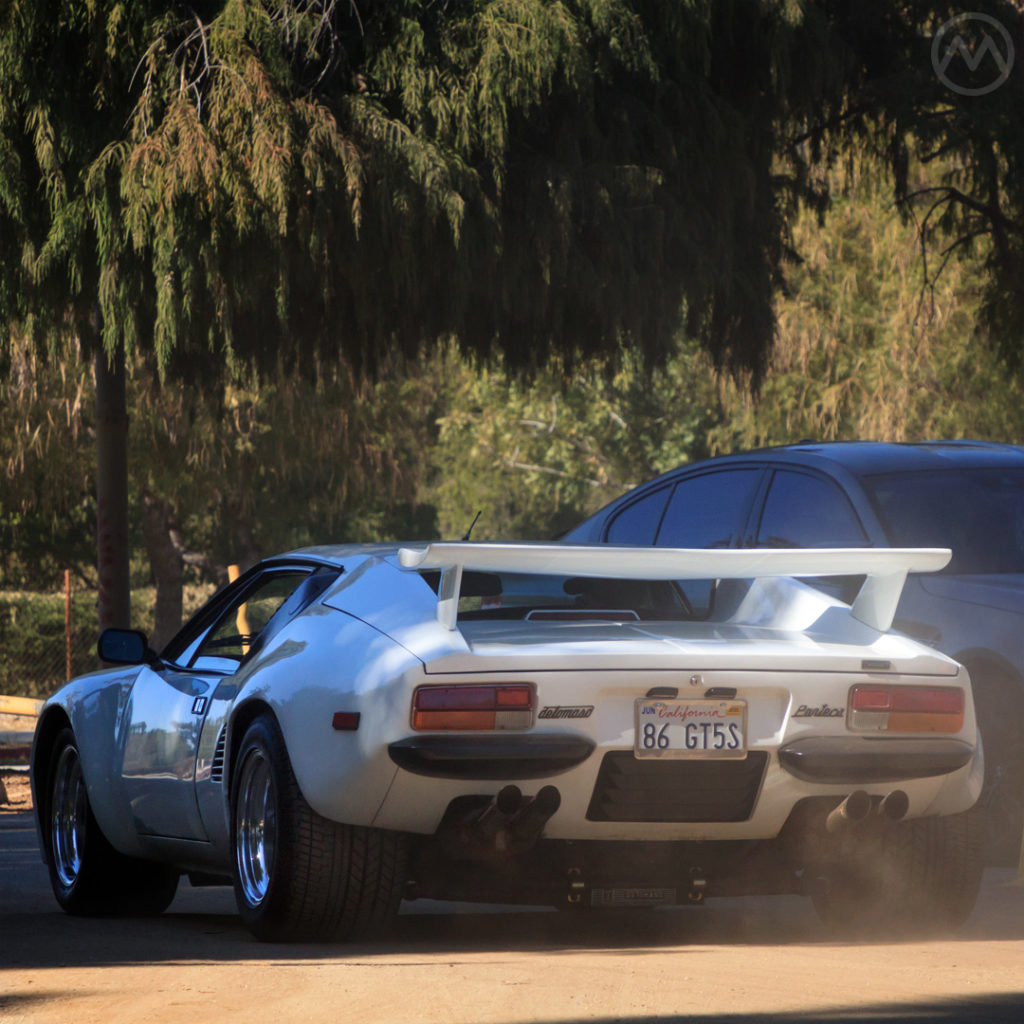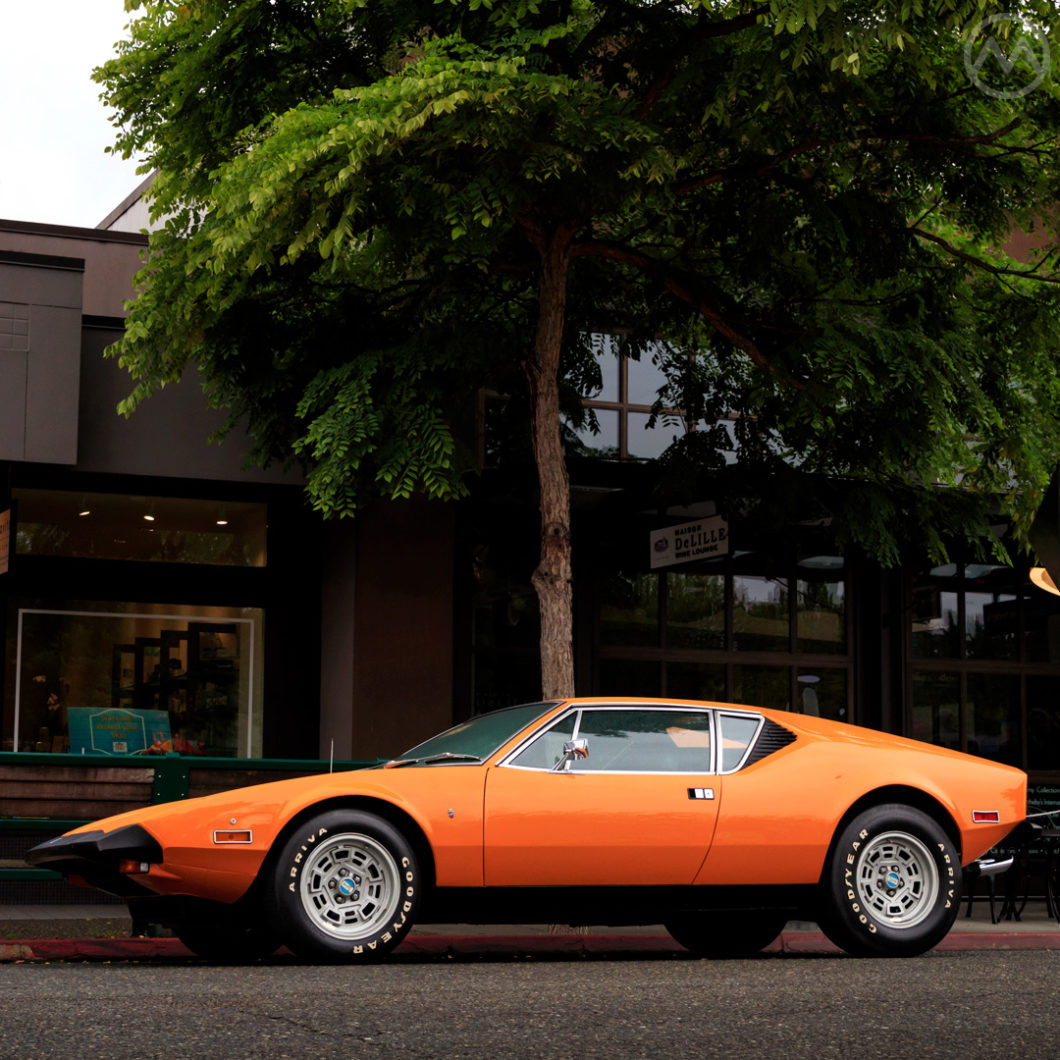Enzo Ferrari’s refusal to sell his company to Ford in 1963 led directly to the creation of the GT40 and Ford’s famous LeMans efforts. There were roadgoing GT40s, sort of, but they weren’t something an ordinary person could buy.
By 1968, Ford wanted to build something it could retail properly – something that would relate Ford’s racing successes with such cars to the showroom – LeMans wasn’t like Nascar.
And so it was that from 1971 to 1975, you could buy a De Tomaso Pantera at your local Lincoln-Mercury dealer, just across the showroom floor from considerably more sedate Comets, Montegos and Continental MkIVs.
Genesis of the Pantera
At the heart of the Pantera was Ford’s 351 Cleveland V8, just as Ford power had been behind Alejandro de Tomaso’s first two roadgoing efforts – the Cortina-powered Vallelunga and the 289/302 V8-powered Mangusta.
Ford power would remain a mainstay of de Tomaso’s sports cars until the early 1990s, when the Guara used BMW power, and it was the Ford powerplants that first got De Tomaso, the make, noticed by Ford.
Before the Vallelunga, de Tomaso had come to Italy from his native Argentina to race – specifically to race for the Maserati Brothers’ O.S.C.A. efforts. After that, he built his own race cars, though he didn’t have a ton of success there.
De Tomaso’s car business was backed by his wife, and fellow racer, Isabelle Haskell – we could do a whole chapter just on Isabelle – who is rarely given much coverage. Isabelle’s family (through her Brother Amory Haskell Jr.’s company, Rowan Controls) helped provide financing to expand De Tomaso’s reach.
With that help, he was able to buy Ghia and Vignale from floundering Dominican ex-dictator Ramfis Trujillo and expand his car business with a new model – the Mangusta – an enlarged, wildly exotic version of the Vallelunga.
The pretty but fragile Mangusta, exotically styled by Giorgetto Giugiaro during his short stint at Ghia, caught Ford Motor Co.’s attention – although the de Tomasos were already well-known to the company – they were friends and sometimes collaborators of Carroll Shelby’s. In 1965, they’d worked together on the stillborn De Tomaso P70 racer.
Ford’s Mangusta-inspired vision, probably Lee Iaccoca’s actually, was of a specialty exotic with Ford Power – like the Mangusta – that could be sold in house. It would trump the Corvette, give Lincoln-Mercury clout with more upscale buyers, and also be a further thumb in the eye of Ferrari. It’d also be far less expensive that creating another product like the GT40.
The key was finding the right low-volume partner.
De Tomaso wanted to build it, so the two companies formed a tight partnership in 1969. Rowan sold its stakes in Ghia and Vignale to Ford as part of the deal, putting Iaccoca firmly in charge of how things went – De Tomaso would now be primarily funded by Ford’s backing.
What resulted was the Pantera – penned by Tom Tjaarda and considerably more sorted out than its predecessor. Fit and finish were abysmal on the early cars but they drove very well and L-M dealers could legitimately offer a Ferrari-like car with Ferrari-like performance for half the price with service at the same dealer who fixed your Mercury Monterey.
The torquey 351 made for big speed and solid durability also made the Pantera an easy car to drive around town for an exotic Italian. Power was transmitted through a reliable and tough ZF transaxle shared, ultimately, with the Maserati Bora.
The Pantera Arrives … Not Quite Ready
The Pantera was generally conceded to not have been “fully cooked” when it came on sale – reliability and quality ills hurt its reputation and ultimately soured the partnership with Ford.
The Pantera first broke cover in Modena in March of 1970 and was previewed for Americans at the 1970 New York show. Less than a year later the first cars began arriving.
Unlike the Vallelunga and the Mangusta, the Pantera was a unibody rather than a backbone chassis with a lightweight body – a unibody entirely devoid of rust proofing.
The early cars were rushed and it showed – Ford had to take a firmer hand in terms of ensuring quality control (which was nowhere near the standards of other Lincoln-Mercury products). The Pantera would never be the most trouble-free car, but the most serious issues were sorted in the first year.

The summer of 1972 brought the Pantera L, a slightly more luxurious version and for some U.S. dealers a kind of “Pantera 2.0” after the first year’s troubles. The L had big black bumpers that would help it through the impact bumper days and some ergonomic changes to what was not a very comfy place to be. The materials were a little nicer too, although the interiors of all early Panteras were somber and sparse.
In Europe a high-compression Pantera GTS followed, and the U.S. did get that model but without some of the performance. Indeed, U.S. market Panteras were all a little slower than global market ones after 1972 due to emissions standards – but Ford added a hotter camshaft to U.S. models to make up some of the difference.
The Ford components and ZF’s bulletproof transaxle were never in doubt – but some owners and Ford itself were often frustrated at the Pantera’s build quality even after Ford’s changes.
After the fuel crisis, Ford grew tired of the experiment and ended its participation in 1975, but De Tomaso kept building Panteras in 1993. Ford had imported about 5,500 cars – though the actual number is disputed.

